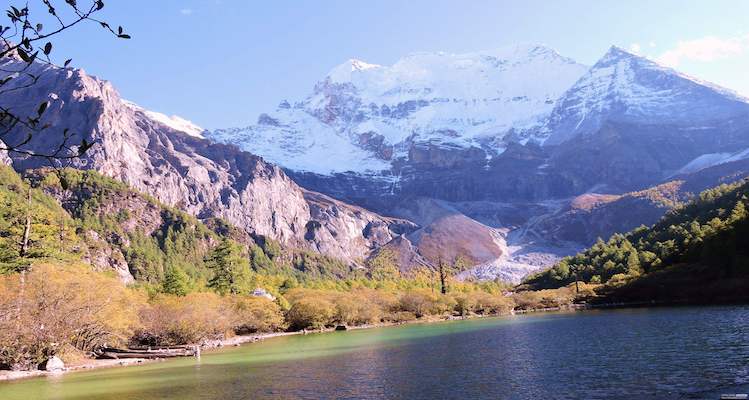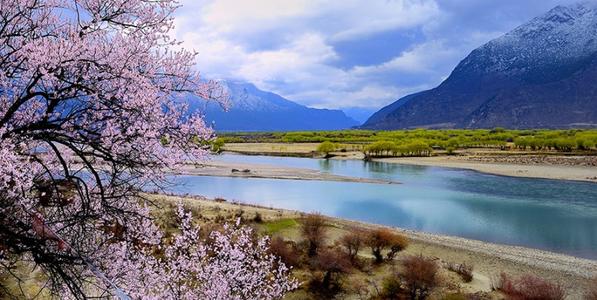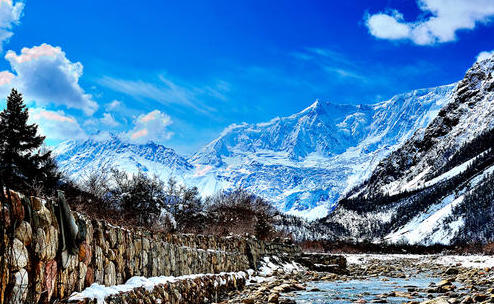+86-15889090408
[email protected]

Also known as Nyingchi or Linzhi, Nyingtri is a prefecture in southeast Tibet with southern borders with India and Myanmar. The lowest of all the prefectures in Tibet in terms of elevation, Nyingtri is well known for its breathtaking natural scenery and the world-famous Peach Blossom Festival that happens every year in April and May.
With a warmer climate than the rest of Tibet, Nyingtri is the prime destination for many tourists who want to experience the Tibetan culture but do not want colder weather in the rest of Tibet. It is also a great place to acclimatize to higher altitudes before traveling to Lhasa and western Tibet. Filled with stunning natural landscapes and fringed by the eastern end of the Himalayas, the innate beauty of this small corner of Tibet will leave you breathless and longing to return for more.
The name, Nyingtri, means “Throne of the Sun,” and it is indeed a sunny place for most of the year. In the winter, temperatures in the valleys and lowlands do not get that cold, and snow is rarely seen except on the mountaintops. With an average elevation of just 3,100 meters, Nyingtri is often known as the “Switzerland of Tibet” because of its mild alpine climate and sub-tropical monsoon weather. More humid and moist than at the higher altitudes of Tibet, Nyingtri is the fertile heart of Tibet and has the ability to grow more crops and more variety than higher up on the plateau. Apart from the ever-present highland barley, farmers can also grow cabbages, wheat, corn, potatoes, carrots, and many other non-indigenous vegetables.

One of the most important cradles of civilization in ancient Tibet, Nyingtri was settled by early nomadic tribes over 5,000 years ago, and remained a dominant feudal society for most of that period. Under the dominion of the ancient Tubo Kingdom from the 7th to 9th centuries, Nyingtri was originally known as Kongpo, due to the original tribes settling on the holy mountain of Kongpo, which lies in a u-bend in the Yarlung Zangbo River, and was largely responsible for the introduction of slash-and-burn agriculture and fishing in Tibet.
A history filled with ancient myths and mysticism, the unsophisticated ways and clan tribalism of the Kongpo added primitive views of them among the other tribes of Tibet, and their basic feudal system meant wars were often fought between local tribes. Mostly animistic in beliefs, Buddhism did not come to Nyingtri fully until the 13th century, and the Monpa and Lhoba peoples fought against its initial integration as the main religion of the area.

Getting to Nyingtri can be done in one of three ways: with regular flights to Nyingtri airport, roads running all the way through the prefecture from Sichuan and Yunnan, and the road from Lhasa connecting the prefecture to the Tibetan capital.
The airport, Nyingtri Mainling Airport, lies a short distance from the county seat of Mainling County and around 72 kilometers from Nyingtri County. Five flights a week, from Monday to Friday, run to Chengdu and back, and buses run from the airport to most major towns.
From Sichuan and Yunnan, roads lead to Nyingtri, and both routes converge on the G318 National Road, which runs from Chengdu to Lhasa and beyond. The G318 is considered to be one of the most dangerous roads in the world, with many sections of the highway still being repaired and single-lane and dirt or gravel sections. However, that said, for a professional driver, it can be done easily with care, and the amazing views and sights of the mountains and valleys along the road make it well worth the trip.
In the future, the railway is expected to be completed that will run from Chengdu in Sichuan Province to Lhasa, the Tibetan Capital. Having already started from both ends, it is expected to meet in the middle sometime in 2020, making travel times from Chengdu as short as 7-8 hours for Nyingtri and 10-12 hours to Lhasa. This reduced travel time is expected to increase tourism to Nyingtri, as well as areas of Shannan that are currently hard to reach. The railway is set to have 47 tunnels and 118 bridges, and it will mean that trips to Nyingtri from Lhasa can be done in less than three hours, allowing more visitors to Tibet to experience the beauty that is Nyingtri.

Sitting as it does on the eastern end of the plateau, Nyingtri has a milder temperature and climate than the rest of Tibet, with higher temperatures all year round and milder winters, although the summer monsoon does produce more rain here than anywhere else on the plateau. Spring and autumn are the typical popular times to visit, although summer is the peak season for tourism, despite the intermittent rains. With clearer skies and mild weather, as well as very little chance of rain, spring and autumn are great times to explore the area and follow some of the most amazing trekking trails in the world. Winding through some of the most beautiful valleys and mountains in China, these treks are popular with foreign tourists and locals alike.
Summer is the time of rains, and it is not always the best time to visit, though it is the peak season for tourism. This is mainly due to the holiday periods in other countries overseas, which often means that summer is the best time for them to visit Tibet. Also, the Nyingtri summer can be a little wetter than higher up around Lhasa and Shigatse, but still has a lot less rain than lowland sub-tropical climates. Winter is colder than in lowland areas like eastern Sichuan, but it is still comfortable enough during the daytime for a great tour. Nights do get very cold, with temperatures getting down to almost freezing, and lower in the depths of winter. Snow is still rare in the lowest areas of Nyingtri, and apart from the normal February and March closure, you can visit the area all year round.
The Barkhor area in Lhasa is often considered a great place to stay. Its central location provides easy access to the Jokhang Temple, local markets, and traditional Tibetan shops, offering a rich cultural experience. Additionally, accommodations in Barkhor vary from budget-friendly guesthouses to more luxurious options, catering to diverse preferences.